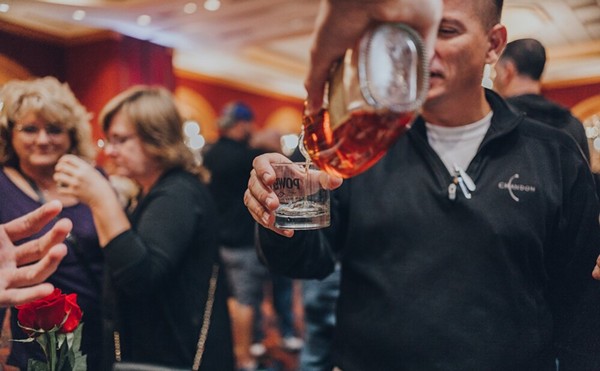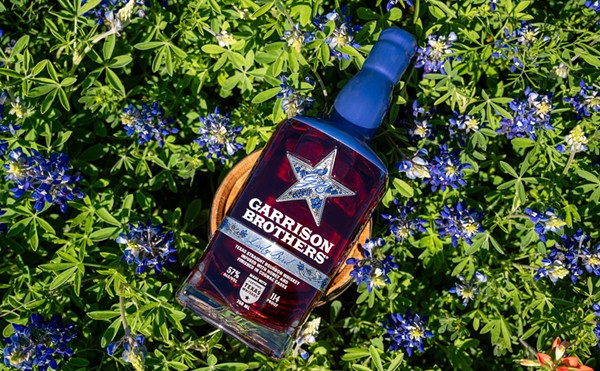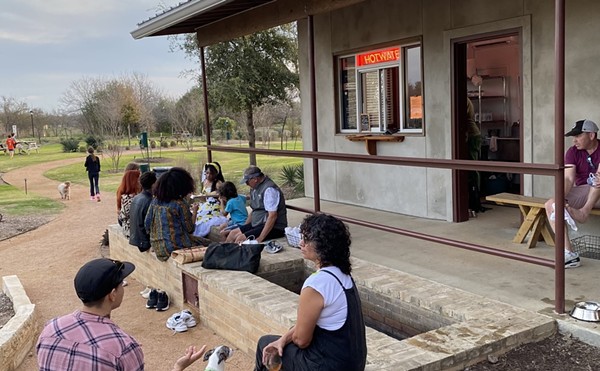White zinfandel was nearly the death of the one, the true, the real red grape — and yet in the end was perhaps its savior. At least its popularity kept many growers from ripping out long-established vines to plant more-fashionable cabernet and chardonnay. We needed time to come to our
senses, and white zin gave it to us.
In a similar scenario, many growers agree that Beaujolais nouveau, the fruity, frivolous, first-to-appear bottling of an already lighthearted wine, poisons the market for the serious stuff ahead of its arrival. In the early ’70s, posters proclaiming “le Beaujolais nouveau est arrive!” would appear all over Paris in early November, and the celebration, once a rustic, regional affair, spread from there to New York and other worldly capitals. Yes, even San Antonio hosted breathlessly awaited Beaujolias-nouveau events.
The result of all this fuss and flash was a cheapening of the product. America came to think of Beaujolais as a harmless, throwaway quaff. The fad may have faded, but the malady lingers on. And then comes a vintage like 2005, regarded by many as the best in decades — especially for the cru Beaujolais, wines from the 10 communes in the region thought to be worthy of their own appellation. Critics such as The New York Times’ Eric Asimov are ecstatic, calling the vintage “great” and its wines “intense” yet with “rare balance.”
Other pundits — and even growers — disagree, however, finding the 2006 vintage, already on some shelves, to be more in the mold of classic Beaujolais: “lighter and more immediately pleasurable,” again according to Asimov.
Omniboire decided to put the two years to the test, side by side. We might have known that this approach would lead to problems. To begin with, the two vintages are indeed poles apart. Then there are the 10 communes to deal with (we tasted six of them) — with styles that vary from lighthearted and feminine to earthy and almost Burgundian. And finally, there are the differing approaches of three major producers we tasted: Georges du Boeuf (by far the biggest producer and possessed of a light, “fun” style); Potel-Aviron (serious, yet dedicated to emphasizing fruit); and Joseph Drouhin (the most classic purveyor).
Oh, and one other thing: This was a tasting panel more dedicated to the poetry of wine than to rating it by the numbers. In other words, certain members (you know who you are) declined to offer numerical scores, rendering the usual ratings system moot. Sorry; you’ll just have to interpret the musings.
We were hosted by Andrew Weissman at Sandbar and conducted our tasting in full view of anyone passing by. Also present were collector and connoisseur Harold Wood, and Glazer’s rep and distinguished palate Joel McKee. With the exception of one wine that McKee deemed flawed, all wines scored above the usual 13/20 cutoff based on the few scores I actually got. More importantly, based on the verbal opinions of all tasters, these were all wines we should be drinking now, nouveau notwithstanding.
Our ’06 wines were from Mr. Beaujolais, George du Boeuf, and we began with the lightest, the Fleurie. McKee found it “all fruit and no secondary flavors — though you look for that.” Wood detected a “weediness,” though he called it “a nice wine to drink.” Weissman deemed it “classic floral-feminine”.
Du Boeuf’s Chiroubles gained some weight in the minds of tasters, with McKee detecting “dusty blue fruit,” and both Wood and Weissman weighing in on intensity and “grip.”
Calling it “the most underrated of crus,” McKee found the Julienas to be “aromatic and floral with notes of blackberry syrup.”
The ’06 Morgon Côte du Puy from Jean Foillard generated some controversy. Wood found it “old-style, chunky, and a little thick,” while Weissman thought it “clean, bright, manageable” and even a little leathery. My take was in between, having found an appealing spiciness that McKee refined to a more precise “sandalwood.”
Leaping back to the future with the ’05s, we began with mirror images of the above four wines — just a year older. And the move was both instructive and rewarding. The Drouhin Fleurie elicited raves from Weissman, who called it “oh-so-right and ready to drink now.” McKee detected raspberry and lavender and thought it “light-bodied and very fresh,” while Wood called it “beautiful, a classic gamay,” and gave it four stars. Or Xs. Or something like that.
Wood also gave four marks of some sort to the next Drouhin, a Chiroubles. My favorite of the tasting (I found it both “floating” and grounded in minerality), this wine began to show what the ’05s are made of — namely “great structure and fine-grained tannins” (McKee). “Wine of the vintage” was Wood’s take — who also found it had a “baby, that’s me” charm. “Best in show with a lot going on” offered Weissman — all the while thinking game birds with maybe a lingonberry sauce.
Potel-Aviron, “a producer for a young man’s palate,” according to Wood, provided the next three ’05 wines. Weissman found the Julienas “weak” with a “banana-yeast” quality, Wood thought it needed “more sparkle,” and McKee rose dutifully to its defense, calling it a riper style with more maceration that “has its spot.”
In this case, then, the ’06 rated higher. The Potel-Aviron Morgon, sadly, was the bottle thought to be flawed, denying us the comparison with the ’06. But the ’05 Potel Aviron Moulin a Vent, a wine for which I hadn’t found an ’06 counterpart, had “the ability to lay down,” according to Weissman. Wood agreed in effect, suggesting the wine “was asleep, not yet resolved,” and that it “had everything there but just needed time.” (Moral: buy the ’06 and drink it while you wait for the ’05 to wake up.)
The ’05 St. Amour 3 Terroirs from Mommesin finished out the tasting with “hints of rose bouquets” (and thoughts of pan-roasted steak with rosemary and garlic) in Weissman’s opinion; “rose hips” and “a lovely tone” in Wood’s estimation; and “subtle fruit” with a “scorched earth” quality (McKee).
So, here’s the resolution-such as it is: The top four wines were all ’05s. In no particular order, they were the Drouhin Chiroubles and Fleurie, the Mommesin St. Amour, and the Potel-Aviron Moulin a Vent. In a few cases, the ’06s actually showed better.
And then there was the hors de concours ’04 Drouhin Moulin a Vent that Wood, in characteristic fashion, just happened to bring along for comparison from his cellar. Sophisticated, light on the palate, totally balanced … this was a stunning wine from a vintage not thought to be great.
“This is why you don’t have to buy $100 bottles of wine,” said Wood in summation — though he, of course, does, and we are glad to drink them when offered. (All of the wines sampled by Omniboire were less than $30, by the way, and many were less than $20.)
Note that though some ’05s are yet to be released, others have been on the market for a while and are difficult to find. Look for the Drouhins on wine lists, for example. The others were sourced from Mike Crum at Saglimbeni Fine Wines and Heidi Holcomb at Central Market. The ’06s should be increasingly available. And, of course, you may feel free to ignore the ’07 Beaujolais Nouveau to be found on a shelf near you right about now. •

















